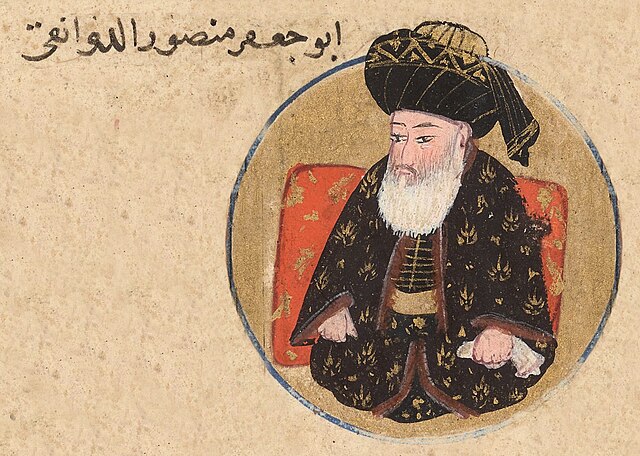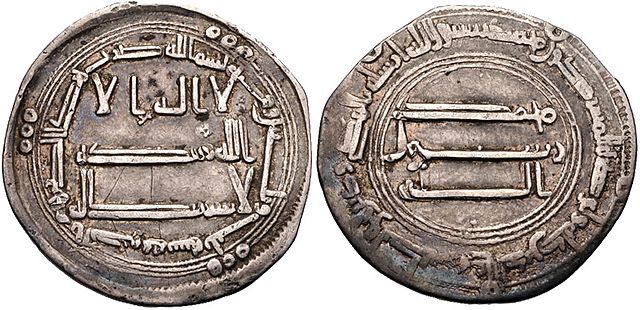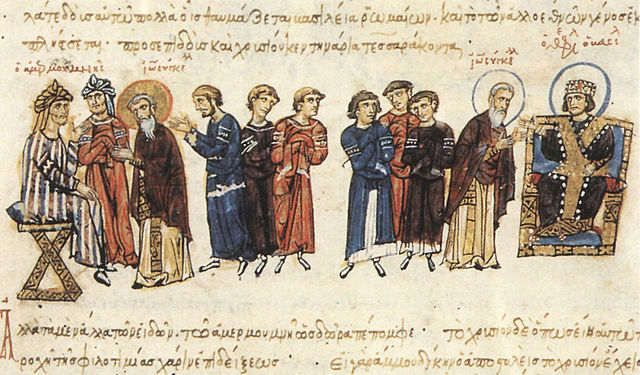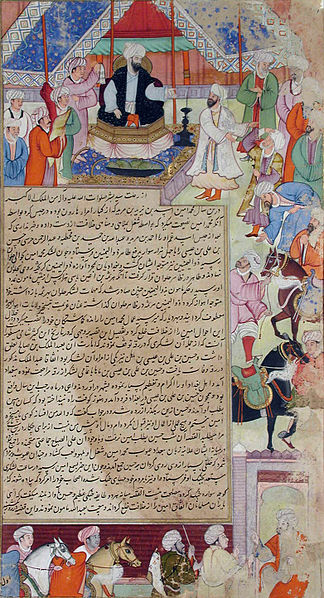Abu al-Abbas Abd Allah ibn Harun al-Rashid, better known by his regnal name al-Ma'mun, was the seventh Abbasid caliph, who reigned from 813 until his death in 833. He succeeded his half-brother al-Amin after a civil war, during which the cohesion of the Abbasid Caliphate was weakened by rebellions and the rise of local strongmen; much of his domestic reign was consumed in pacification campaigns. Well educated and with a considerable interest in scholarship, al-Ma'mun promoted the Translation Movement, the flowering of learning and the sciences in Baghdad, and the publishing of al-Khwarizmi's book now known as "Algebra". He is also known for supporting the doctrine of Mu'tazilism and for imprisoning Imam Ahmad ibn Hanbal, the rise of religious persecution (mihna), and for the resumption of large-scale warfare with the Byzantine Empire.
Gold dinar of al-Ma'mun, minted in Egypt in 830/1
Silver Dirham of al-Ma'mun. AH 199–218 / AD 813–833. Dirham weight 25mm, 3.19 g, 3h. Medinat Isbahan mint dated 205 AD (820/1 AD)
The Byzantine embassy of John the Grammarian in 829 to Ma'mun (depicted left) from Theophilos (depicted right)
The populace pays allegiance to the Abbasid caliph, al-Ma'mun in 813. (from the book Tarikh-i Alfi 1593 CE)
The Abbasid Caliphate or Abbasid Empire was the third caliphate to succeed the Islamic prophet Muhammad. It was founded by a dynasty descended from Muhammad's uncle, Abbas ibn Abd al-Muttalib, from whom the dynasty takes its name. They ruled as caliphs for most of the caliphate from their capital in Baghdad in modern-day Iraq, after having overthrown the Umayyad Caliphate in the Abbasid Revolution of 750 CE (132 AH). The Abbasid Revolution had its origins and first successes in the easterly region of Khorasan, far from the bases of Umayyad power in Syria and Iraq. The Abbasid Caliphate first centered its government in Kufa, modern-day Iraq, but in 762 the caliph Al-Mansur founded the city of Baghdad, near the ancient Babylonian capital city of Babylon and Persian city of Ctesiphon. Baghdad became the center of science, culture, and invention in what became known as the Golden Age of Islam. It was also during this period that Islamic manuscript production reached its height. Between the 8th and 10th centuries, Abbasid artisans pioneered and perfected manuscript techniques that became standards of the practice. This, in addition to housing several key academic institutions, including the House of Wisdom, as well as a multiethnic and multi-religious environment, garnered it an international reputation as the "Centre of Learning".

Portrait of al-Mansur (r. 754–775) from the genealogy (silsilanāma) "Cream of Histories" (Zübdet-üt Tevarih, 1598)
Early 14th century copy of the Samanid-period Tarikhnama of Bal'ami (10th century) depicting al-Saffah (r. 750–754) as he receives pledges of allegiance in Kufa
Decorated niche from the Abbasid mosque of Afrasiab, Samarkand in Sogdia, 750–825 CE.
The spiral minaret of the Great Mosque of Samarra, built in 851 CE (237 AH) on the western side of the city of Samarra








